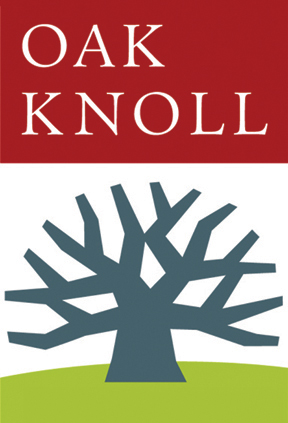hardcover, dust jacket
2016 · New Castle, Delaware
by Vervliet, Hendrik D.L.
New Castle, Delaware: Oak Knoll Press, 2016. hardcover, dust jacket. 7.25 x 9.75 inches. hardcover, dust jacket. 248 pages. "Overall, an astonishing achievement from a scholar with an unerring eye for the minutiae of typgraphical identification, this is a volume that will long remain useful for printing historians."
-- David Shaw, The Library, June 2018
"Nobody is better qualified than Hendrik Vervliet... to establish which of these ornaments are by Granjon, and to say when and where they were used. ... Definitive."
-- James Mosely, Journal of the Printing Historical Society
Robert Granjon (1513-1590) was a younger contemporary of Claude Garamont (c.1510-1561) and with him one of the great names in the history of type-design. His typefaces have been studied in some depth, but except for a dozen combinable type-ornaments surveyed by the author previously, his printers' flowers, however elegant and innovative, have attracted only cursory attention in such broader works as Morison's on the 'Fell' types (1967).
This book, by typographic scholar Hendrik Vervliet, examines which 'printer's flowers' -- alternative terms are fleurons or type-ornaments -- may be attributed to Granjon. Building on earlier researches into sixteenth-century vine leaves and Granjon's combinable ornaments (2012; 2015), the author describes one hundred and three ornaments with first appearances during Granjon's active life, either in his own publications and at presses of his associates and regular customers -- such as Fezandat in Paris, de Tournes in Lyons, Silvius in Antwerp, and Basa in Rome -- or in potential sources, such as Giolito's publications in Venice.
At the end of the author's research, however, it became clear that only about half of them could be attributed to Granjon on more or less sure grounds. The other half seems attributable to ornamentists, as yet nameless, working for de Tournes in Lyons or Giolito in Venice. The chapter on Giolito's ornaments aims to clear up the problem of whether Gabriele Giolito was Granjon's first customer, or rather, as is surmised here, a source for some or all of his designs. The main user of Granjon's founts in Lyons was Jean de Tournes. Previous studies of de Tournes either evaded the problem or were sketchy and unillustrated.
Arguments used for attributing flowers to Granjon were: archival references; materials (cast or woodcut); occurrences of punches, matrices, or type; occurrences in publications; instances of non-proprietary use; Granjon's known whereabouts at a first appearance; stylistic criteria. The contents include a chronology of Granjon's ornaments (1544-1586), ornaments used by Gabriele Giolito in Venice (1542-1550), and flowers and ornaments used by de Tournes in Lyons (1544-1577). Appendices include illustrated lists of ornaments by size, width, and date. An entry typically consists of: name of the flower; facsimile at actual size; motif; height and width; punchcutter; first occurrence; type-specimens and artifacts that have been preserved; recent literature and notes. References and an index follow.
Henrik D.L. Vervliet was Librarian at the University of Antwerp and a professor at the University of Amsterdam. In 2011, the American Printing Historical Association presented him with its annual award for distinguished contribution to the study of printing history. (Inventory #: 127576)
-- David Shaw, The Library, June 2018
"Nobody is better qualified than Hendrik Vervliet... to establish which of these ornaments are by Granjon, and to say when and where they were used. ... Definitive."
-- James Mosely, Journal of the Printing Historical Society
Robert Granjon (1513-1590) was a younger contemporary of Claude Garamont (c.1510-1561) and with him one of the great names in the history of type-design. His typefaces have been studied in some depth, but except for a dozen combinable type-ornaments surveyed by the author previously, his printers' flowers, however elegant and innovative, have attracted only cursory attention in such broader works as Morison's on the 'Fell' types (1967).
This book, by typographic scholar Hendrik Vervliet, examines which 'printer's flowers' -- alternative terms are fleurons or type-ornaments -- may be attributed to Granjon. Building on earlier researches into sixteenth-century vine leaves and Granjon's combinable ornaments (2012; 2015), the author describes one hundred and three ornaments with first appearances during Granjon's active life, either in his own publications and at presses of his associates and regular customers -- such as Fezandat in Paris, de Tournes in Lyons, Silvius in Antwerp, and Basa in Rome -- or in potential sources, such as Giolito's publications in Venice.
At the end of the author's research, however, it became clear that only about half of them could be attributed to Granjon on more or less sure grounds. The other half seems attributable to ornamentists, as yet nameless, working for de Tournes in Lyons or Giolito in Venice. The chapter on Giolito's ornaments aims to clear up the problem of whether Gabriele Giolito was Granjon's first customer, or rather, as is surmised here, a source for some or all of his designs. The main user of Granjon's founts in Lyons was Jean de Tournes. Previous studies of de Tournes either evaded the problem or were sketchy and unillustrated.
Arguments used for attributing flowers to Granjon were: archival references; materials (cast or woodcut); occurrences of punches, matrices, or type; occurrences in publications; instances of non-proprietary use; Granjon's known whereabouts at a first appearance; stylistic criteria. The contents include a chronology of Granjon's ornaments (1544-1586), ornaments used by Gabriele Giolito in Venice (1542-1550), and flowers and ornaments used by de Tournes in Lyons (1544-1577). Appendices include illustrated lists of ornaments by size, width, and date. An entry typically consists of: name of the flower; facsimile at actual size; motif; height and width; punchcutter; first occurrence; type-specimens and artifacts that have been preserved; recent literature and notes. References and an index follow.
Henrik D.L. Vervliet was Librarian at the University of Antwerp and a professor at the University of Amsterdam. In 2011, the American Printing Historical Association presented him with its annual award for distinguished contribution to the study of printing history. (Inventory #: 127576)






